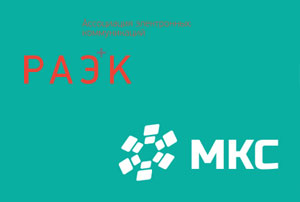Timber industry, which is actively developing at the present and uses the support of the government of Russia, has prospects for growth through substitution of finished products imports that require deep processing. Another direction of development is the industry export.
The government (Ministry of Industry and Trade) focuses on softwood pulp (the demand for it in the world by 2030 will grow by 10 million m3, mainly due to the South-East Asia) and viscose pulp (demand will double). According to Viktor Evtukhov, Deputy Minister of Industry and Trade: “For the development of the industry in the country, we see it appropriate to use a cluster approach, actively applied in the world”.
The cluster approach is a management approach to the organization of the industrial process by which on-site cluster is associated with a particular production and complex of related companies. It is believed that this approach contributes to the development of high technologies in industry and the economy as a whole.
In response to the request of the cultural-political magazine “E Vesti”, Viktor Evtukhov told the details of the cluster approach to forest industry development and investment opportunities for our readers.
E Vesti: Mr. Evtukhov, can I ask You to identify what is the cluster approach in the forestry sector?
Victor Evtukhov: Industrial clusters is a new method of territorial development of the industry. It is stipulated by the Federal law “On industrial policy in the Russian Federation”. We hope that the cluster approach will allow to move to a new level of strategic planning and development of the timber industry, as well as to solve problems of staffing and financial support for ongoing industry projects.
In the result of the analysis in the timber industry we compiled a list of key areas for the formation of clusters – the Arkhangelsk, Vologda, Tomsk region, Republic of Komi, Krasnoyarsk Krai, the far Eastern cluster. The long-term plans include the creation of at least 20 timber industry clusters.
From the point of view of specialization, it is possible to allocate three basic types of clusters in forestry: specializing in primary processing, pulp and paper production and production of wood products. Less common is the full integration of these types of clusters.
EV: What are the characteristics of these clusters?
Victor Evtukhov: Each of the types of clusters determines its own industry coverage.
Clusters in logging and primary processing are characterized by:
- Logging production of round wood;
- Sawing and planing wood.
Clusters in the field of building materials and products of wood are characterized by the presence of such plants as:
- Manufacture of veneer sheets, plywood, boards and panels;
- Manufacture of wooden building designs and joiner’s products;
- Manufacture of wooden containers and of other products of wood;
- Manufacturing of wooden houses and furniture
Clusters in the field of pulp and paper production require the presence of pulp, wood pulp, paper and paperboard. In addition, it is possible to have the production of paper and paperboard.
EV: Are there any current projects of clusters in the forest industry?
Victor Evtukhov: Now in the registry of industrial clusters the first timber cluster “PomorInnivales” in the Arkhangelsk region is already included. In early September a cooperation agreement to create a far Eastern timber industry cluster between the Khabarovsk territory, Vnesheconombank, RFP Group and “Asia forest” was signed.
EV: What are the investment opportunities in the clusters and the conditions under which support will be provided?
Victor Evtukhov: The Ministry of industry and trade announced the annual receipt of applications to conduct inspection of industrial cluster and specialized industrial cluster in the compliance with the requirements of order No. 779.
Industrial clusters, authenticated users, and included in the registry, can apply for new measures of state support – subsidies for compensation of part of expenses for realization of joint projects within the approved 28 January 2016 a resolution of the Government of the Russian Federation No. 41. Source of financial support of the proposed measures is a core support grant.
Subsidies will be provided in a declarative manner in accordance with the industrial cluster the requirements and commits to achieve a target performance for the project industrial cluster.
Reimbursement is limited by 50% of the total cost of the initiators of the joint project for its implementation.
In order to improve the efficiency of spending of Federal budget funds conditions of admission of participants of industrial clusters in the selection of projects were approved.
In particular, the fifth year since the implementation of the joint project needs to provide a 15 percent increase in the number of high-performance workplaces, as well as the achievement of one of the rules stipulated targets.
The key item is the decrease in expenses for purchase of components from third parties (including manufacturers) and increase the value added of the final product of the cluster made by the enterprises-participants of the cluster. The decisions taken will contribute to the development of industrial cooperation, creation of new highly productive jobs.




